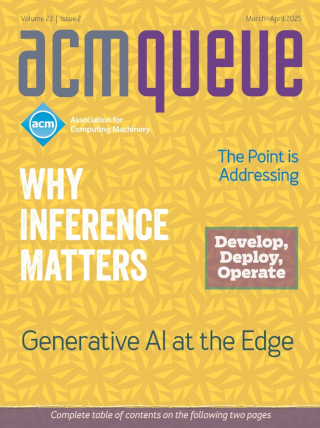
A Conversation with Teresa Meng:
The founder of Atheros analyzes the role of signal processing in the evolving world of wireless communications.
In 1999, Teresa Meng took a leave of absence from Stanford University and with colleagues from Stanford and the University of California, Berkeley, founded Atheros Communications to develop and deliver the core technology for wireless communication systems. Using a combination of signal processing and CMOS RF technology, Atheros came up with a pioneering 5 GHz wireless LAN chipset found in most 802.11a/b/g products, and continues to extend its market as wireless communications evolve.
BPM: The Promise and the Challenge:
It’s all about closing the loop from conception to execution and back.
Over the last decade, businesses and governments have been giving increasing attention to business processes - to their description, automation, and management. This interest grows out of the need to streamline business operations, consolidate organizations, and save costs, reflecting the fact that the process is the basic unit of business value within an organization.
Of Processors and Processing:
There’s more than one way to DSP
Digital signal processing is a stealth technology. It is the core enabling technology in everything from your cellphone to the Mars Rover. It goes much further than just enabling a one-time breakthrough product. It provides ever-increasing capability; compare the performance gains made by dial-up modems with the recent performance gains of DSL and cable modems. Remarkably, digital signal processing has become ubiquitous with little fanfare, and most of its users are not even aware of what it is. Therefore, it is worthwhile to look at the development history of DSP, an explanation of what the technology is, and a review of the many technologies that are used to implement modern digital signal processing systems.
DSPs: Back to the Future:
To understand where DSPs are headed, we must look at where they’ve come from.
From the dawn of the DSP (digital signal processor), an old quote still echoes: "Oh, no! We’ll have to use state-of-the-art 5µm NMOS!" The speaker’s name is lost in the fog of history, as are many things from the ancient days of 5µm chip design. This quote refers to the first Bell Labs DSP whose mask set in fact underwent a 10 percent linear lithographic shrink to 4.5µm NMOS (N-channel metal oxide semiconductor) channel length and taped out in late 1979 with an aggressive full-custom circuit design. The designer I quoted had realized that the best technology of the time would be required to meet the performance demands of the then cutting-edge digital Touch-Tone receiver.
Damnéd Digits:
Floating in the real world of real numbers
I remind you, first, that "damnéd" has two syllables, calling for a Shakespearean sneer as sneered by Olivier strutting his King Richard III stuff.
Death by UML Fever:
Self-diagnosis and early treatment are crucial in the fight against UML Fever.
A potentially deadly illness, clinically referred to as UML (Unified Modeling Language) fever, is plaguing many software-engineering efforts today. This fever has many different strains that vary in levels of lethality and contagion. A number of these strains are symptomatically related, however. Rigorous laboratory analysis has revealed that each is unique in origin and makeup. A particularly insidious characteristic of UML fever, common to most of its assorted strains, is the difficulty individuals and organizations have in self-diagnosing the affliction. A consequence is that many cases of the fever go untreated and often evolve into more complex and lethal strains.
Digitally Assisted Analog Integrated Circuits:
Closing the gap between analog and digital
In past decades, “Moore’s law”1 has governed the revolution in microelectronics. Through continuous advancements in device and fabrication technology, the industry has maintained exponential progress rates in transistor miniaturization and integration density. As a result, microchips have become cheaper, faster, more complex, and more power efficient.
On Mapping Alogrithms to DSP Architectures:
Knowledge of both the algorithm and target architecture is crucial.
Our complex world is characterized by representation, transmission, and storage of information - and information is mostly processed in digital form. With the advent of DSPs (digital signal processors), engineers are able to implement complex algorithms with relative ease. Today we find DSPs all around us - in cars, digital cameras, MP3 and DVD players, modems, and so forth. Their widespread use and deployment in complex systems has triggered a revolution in DSP architectures, which in turn has enabled engineers to implement algorithms of ever-increasing complexity. A DSP programmer today must be proficient in not only digital signal processing but also computer architecture and software engineering.
Stream Processors: Progammability and Efficiency:
Will this new kid on the block muscle out ASIC and DSP?
Many signal processing applications require both efficiency and programmability. Baseband signal processing in 3G cellular base stations, for example, requires hundreds of GOPS (giga, or billions, of operations per second) with a power budget of a few watts, an efficiency of about 100 GOPS/W (GOPS per watt), or 10 pJ/op (picoJoules per operation). At the same time programmability is needed to follow evolving standards, to support multiple air interfaces, and to dynamically provision processing resources over different air interfaces. Digital television, surveillance video processing, automated optical inspection, and mobile cameras, camcorders, and 3G cellular handsets have similar needs.



